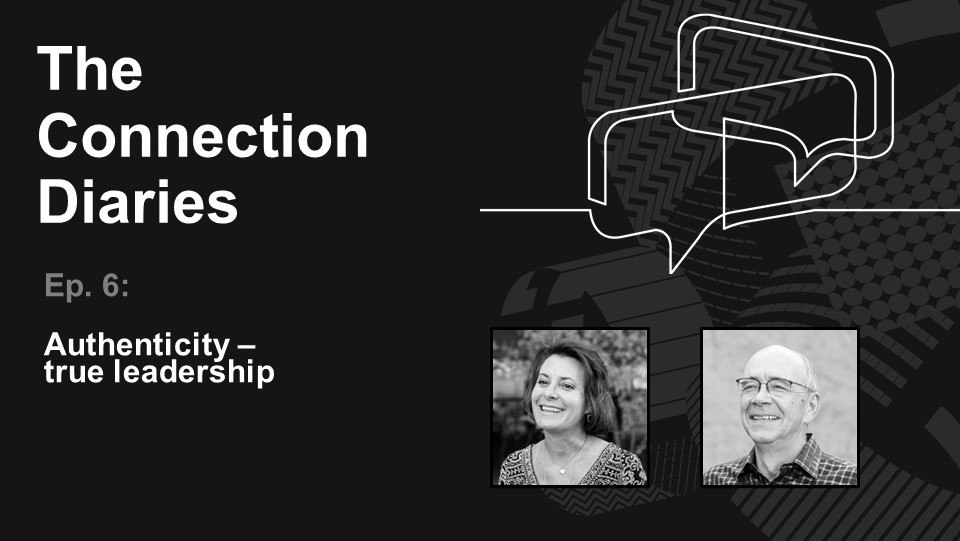As we continue to connect from home, we do occasionally run into technical connectivity issues (particularly with full households trying to do all kinds of virtual work!). While we’re doing our best to ensure we have strong internet connectivity, we also want to be timely. We appreciate your understanding!
Authenticity – it isn’t only about what’s true for you
We are hearing every day that we need to connect and communicate more given the current crisis, but when we talk about authentic communication, what exactly does that mean?
Authenticity is being true to yourself, to others and to the circumstances that you occupy. We often find that people relate to authenticity as being true to self, but that leaves out an important part of the equation. When it comes to leadership communication, if we only place importance on being true to ourselves then we miss an opportunity to connect with those we lead. We also risk appearing insensitive and disconnected from what’s important and true for them.
Before deciding on the message you want to deliver, we recommend stopping to think not only about what you believe is important to communicate but also about your audience and what’s on their minds. With that awareness it’s likely that your message will come together in a way that resonates and more easily accomplishes the alignment you’re looking for.
To find more of our insights and tools on Authenticity, you can explore the Authenticity section of The Vitality Imperative and it’s online resources.
We will be hosting a live 30-minute conversation on this topic next week. Stay tuned for more details and registration by subscribing for our newsletter. We will continue to explore this topic and many others related to how we stay connected and keep creating value in challenging circumstances, so stay tuned for future episodes of The Connection Diaries.
If you and your community have been having inspiring conversations and ideas about how to navigate the COVID-19 reality, we would love to hear about them! Please comment below or connect with us on LinkedIn. Let’s unleash our collective brilliance.
Full Transcript
Robin: Hi everyone and welcome to this week’s edition of the Connection Diaries. This week we want to delve into authenticity and in particular, what does communication mean? We’re hearing a lot about how much we need to connect and communicate more, particularly given the current crisis. When we say “authentic communication,” what does that mean? Mickey, how would you define authenticity?
Mickey: Well, I think from our perspective in conversant, and those of you who’re longtime clients this will not surprise, we think that authenticity is being true to yourself, to others, and to the circumstances that you occupy. So that’s our short form, and that actually ends up meaning quite a bit when it comes to authentic communication. So Robin, when you are talking about authentic communication, what has it be so top of mind right now for you? Because I know you’ve been concerned about it. You say you’ve seen a lot that’s not.
Robin: Well I think your definition is actually the source of my—what has me be concerned, right, so the definition that we use is expansive beyond I think how most people talk about authenticity. I think most of the time, when people are talking about authenticity, they only have one of those elements, which is true to self, and they forget other and circumstance. And so what I’m seeing a lot of, I think many of us are, is an inbox flooded with things that I believe are genuine, meaning that people really do want to reach out, but they’re not connected to my circumstances, nor are they particularly curious about my circumstances. Right, it really is mostly about whatever it is they’re trying to promote and/or the current—the connection between that and the current circumstances. So I think this notion of expanding—that authenticity actually has to include connection to being true to others’ purposes, concerns, and circumstances is really crucial.
Mickey: One example I think’s good is this week, a CEO we care about called and wanted to check in on a formal corporate messaging recommendation that was given to him by his communication staff, and he just felt uncomfortable with it. And when we looked at it, we applauded him on his discomfort because it sounded rather stilted in scripted, and we did not think it was going to create a connection that he’d be happy with. So I asked him, given that this was a communication from the CEO to all employees around the world, what did he think was most urgently on the minds of the people that he was going to be talking to? And he said safety. He said, “I think they’re worried about their own safety, their family’s safety, the people they care about. They’re worried about the safety of their jobs.” And I said, “Okay, and when you consider that’s what’s prominent for them, what does that bring up for you?” He said that “I care about the same thing.” He said, “I’m worried about my own family safety, I’m worried about the safety of everybody who works here, I’m worried about preserving everybody’s jobs and the long-term safety of our whole company.” I said okay, I said “How about you just put aside the script that your communication staff sent you and just write down what’s coming from you right now that’s important to you and to them?” And he said that’s a great idea. He did that, we talked an hour or so later, and he told me that it was extraordinarily easy for him to do that. And then he just looked at the words that came through from the communication staff to see, were there any things in there that actually still resonated, and there were a couple of things. Then he did his video and the reaction that he got he’s very, very happy with. And we say it’s because it was genuine, it was true, it was authentic.
Robin: You know, Mick, what I love about that story is—and that counsel—is it applies well beyond our current circumstances. The number of times somebody, myself included, right—it’s a powerpoint or a pitch and doesn’t—and we don’t stop to think about the audience and what’s most on their minds—I think are the times when they land really flat. And so often, when I’m coaching someone about presenting to the board, the first conversation is, what’s most on the mine for your board, or what’s most on the mind for your executive team? Before you put the PowerPoint together, think about that and what you’re trying to communicate first, then the slides will make a whole lot more sense. Too often we start with the slides and then want to tell the story out of them. I think the council that we’re giving here and well beyond this is, actually, to have authentic communication, think about authentically what do you want to say and what do they need to hear?
Mickey: It really fits—one of our colleagues not very long ago said, “Well I talked to somebody who said how do I get people to like what I’m saying?” And he said, “Well how about you start with what they would like you to talk about?” And I think that’s pretty darn good.
Robin: So, week after next, we’re going to spend a lot more time talking about authenticity and authentic communication amidst COVID-19 and just in the life of leadership. So we look forward to having you join us. Mickey, anything you want to add in closing?
Mickey: We know that you care about leadership actually making a difference, and we think that authenticity is at the heart of that matter. So thanks for sticking with us now, and we hope to see you again when we talk about authenticity with you and a lot of other clients who care about it as well.
Robin: Bye, all.




